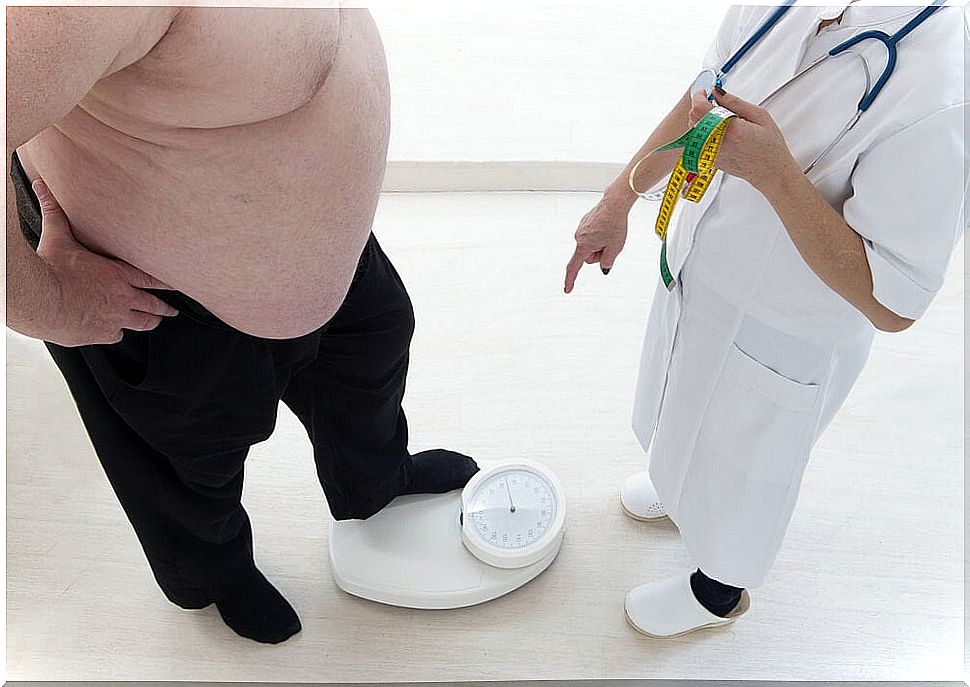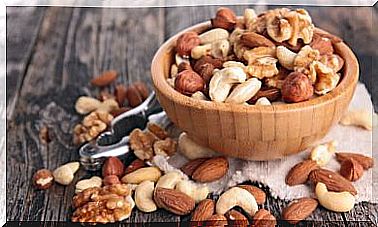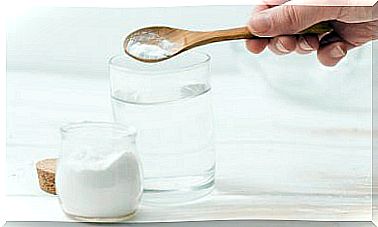The Relationship Between Weight And Joint Wear
Joint overload caused by excess weight and the inflammatory processes that derive from this condition are factors that can influence joint wear.

Excess weight and joint wear are a bad combination. Although it’s easy to overlook, both being overweight and obese increase joint overload. In addition, they accelerate the process of deterioration of cartilage that prevents friction between one bone and another.
It is true that there are many factors that can influence the development and progression of this degenerative disorder. However, when the body mass index is above normal, the entire joint complex is compromised and complications increase.
Although opinions on this relationship are divided in the medical community, the truth is that maintaining a healthy weight reduces all risks. Therefore, below we want to review the aspects that associate weight and joint wear and how to avoid it.
What is joint wear?
Joint wear and tear is a degenerative process that develops due to the gradual loss of the cartilage that lines the joints. In addition, it not only deteriorates the cartilaginous articular surface, but negatively impacts the ligaments, tendons and menisci. The function of cartilage is to cushion the ends of the bones to allow them to move towards each other. Therefore, as it deteriorates, a progressive inflammatory process is triggered that causes severe pain and movement difficulties.
In most cases, as it is progressive wear, it appears more frequently in older people. However, its early evolution and the rapid progression of its symptoms are also linked to being overweight and obese.
Relationship between weight and joint wear

There are several mechanisms that explain the link between weight and joint wear. The first and most obvious is that it is not the same as a knee bearing 65 kilos than 90. In the second case, of course, the wear of the cartilage is greater. On the other hand, overweight and obese patients have a functional limitation that affects the development of problems such as osteoarthritis or osteoarthritis. This, together with the pressure that increases on the joint, increases friction and friction between the cartilage, promoting its premature degeneration.
The other factor, which is less obvious, is that obese people have hormonal imbalances that increase inflammatory processes and cartilage wear. This could explain why it also affects the hands and elbows, which are non-weight-bearing joints.
Being overweight worsens joint wear symptoms
The severity of the symptoms of joint wear and tear is higher in those who have a lot of weight. In fact, to reduce pain and inflammation, especially in knee osteoarthritis, it is advisable to lose weight. A body mass index above normal increases stress on the joint and increases pain attacks. In addition, it decreases mobility and makes obesity control more difficult.
Similarly, this condition is linked to problems such as diabetes and hypertension, which negatively affect cartilage damage. Therefore, the relationship between weight and muscle wasting is not limited only to wear caused by overload, it also affects its rate of progression and severity.
Can losing weight reduce joint wear and tear pain?

When a pathology has already developed due to joint wear, there is no way to definitively cure the pain. However, in the case of patients who are overweight, losing a few pounds can help reduce it. In fact, scientific studies have concluded that each pound of weight lost reduces the load placed on the knees in daily activities by up to four times. Therefore, reaching a healthy and balanced weight is essential to maintain quality of life.
Recommendations to combat overweight and obesity
The measures to combat overweight and obesity vary in each patient, depending on their age, physical condition and health. However, on a general level, there are some key tips that can help you shed a few pounds.
- Eat a balanced, low-calorie diet that includes all nutrient groups.
- Decrease your intake of simple carbohydrates, sugars, and saturated fats.
- Eat a high-quality breakfast with protein and omega 3 fatty acids.
- Opt for skimmed dairy or plant-based milks.
- Avoid the consumption of alcoholic beverages, sugary soft drinks and stimulants.
- Divide the portions and eat between five and six meals a day.
- Prepare healthy snacks with fruits, vegetables and small servings of nuts.
- Do regular physical exercise or play sports.
In conclusion, the relationship between weight and joint wear is the reason why overweight and obese patients have more complications associated with this degenerative process. Therefore, for both prevention and treatment it is essential to try to maintain a healthy weight.









